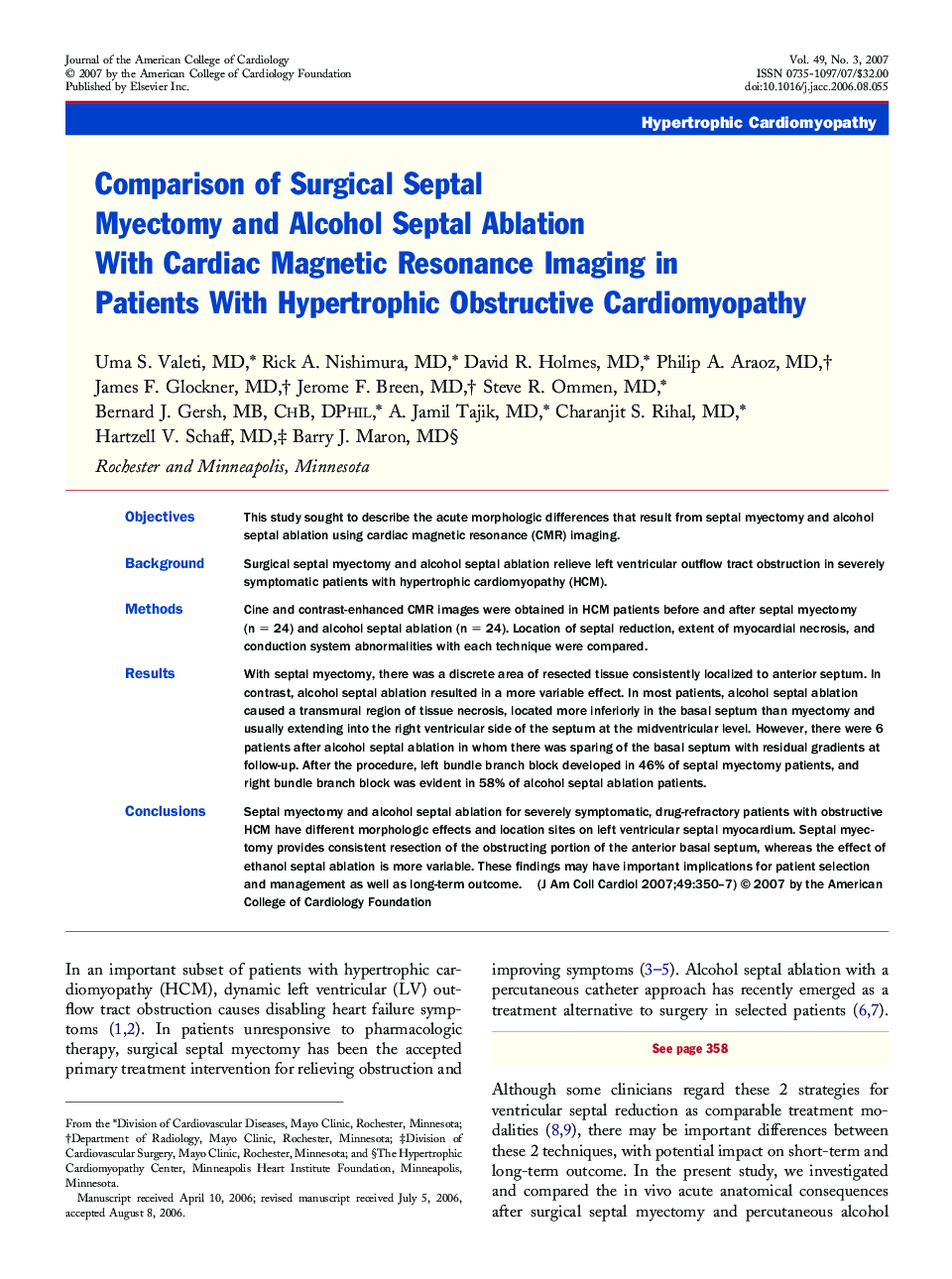| Article ID | Journal | Published Year | Pages | File Type |
|---|---|---|---|---|
| 2954713 | Journal of the American College of Cardiology | 2007 | 8 Pages |
ObjectivesThis study sought to describe the acute morphologic differences that result from septal myectomy and alcohol septal ablation using cardiac magnetic resonance (CMR) imaging.BackgroundSurgical septal myectomy and alcohol septal ablation relieve left ventricular outflow tract obstruction in severely symptomatic patients with hypertrophic cardiomyopathy (HCM).MethodsCine and contrast-enhanced CMR images were obtained in HCM patients before and after septal myectomy (n = 24) and alcohol septal ablation (n = 24). Location of septal reduction, extent of myocardial necrosis, and conduction system abnormalities with each technique were compared.ResultsWith septal myectomy, there was a discrete area of resected tissue consistently localized to anterior septum. In contrast, alcohol septal ablation resulted in a more variable effect. In most patients, alcohol septal ablation caused a transmural region of tissue necrosis, located more inferiorly in the basal septum than myectomy and usually extending into the right ventricular side of the septum at the midventricular level. However, there were 6 patients after alcohol septal ablation in whom there was sparing of the basal septum with residual gradients at follow-up. After the procedure, left bundle branch block developed in 46% of septal myectomy patients, and right bundle branch block was evident in 58% of alcohol septal ablation patients.ConclusionsSeptal myectomy and alcohol septal ablation for severely symptomatic, drug-refractory patients with obstructive HCM have different morphologic effects and location sites on left ventricular septal myocardium. Septal myectomy provides consistent resection of the obstructing portion of the anterior basal septum, whereas the effect of ethanol septal ablation is more variable. These findings may have important implications for patient selection and management as well as long-term outcome.
